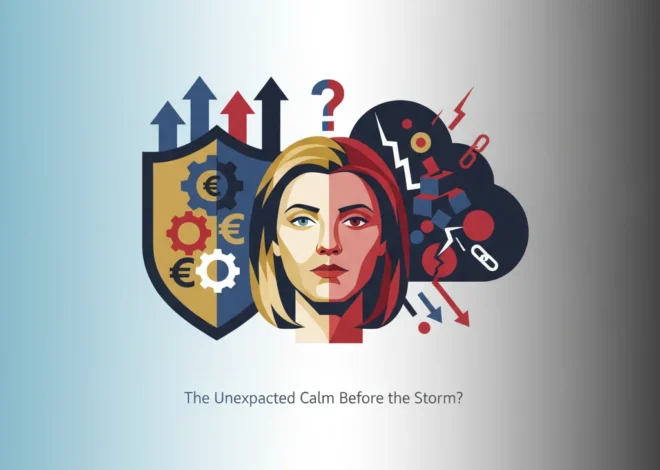
Fiscal Tightrope: Decoding the High-Stakes Battle Over Spending Freezes and Fuel Duty
In the complex world of national economics, few events are as revealing as the annual budget debate. It’s a theater where political ideology, fiscal reality, and economic theory collide. A recent development has brought this drama into sharp focus: a key government committee is expected to oppose all proposed amendments to the upcoming budget. While this may sound like procedural jargon, the amendments in question—specifically a government-wide spending freeze and a reduction to a planned hike in fuel duty—represent a fundamental fork in the road for economic policy. This decision will have cascading effects on the broader economy, influencing everything from corporate investment strategies to the health of the stock market.
This isn’t merely a political squabble; it’s a high-stakes negotiation over the direction of the economy. For investors, finance professionals, and business leaders, understanding the nuances of this debate is critical. Will the government prioritize fiscal consolidation at the risk of stifling growth, or will it maintain spending levels to support public services and stimulate demand, potentially at the cost of higher taxes or debt? The outcome of this fiscal tug-of-war will set the tone for the economic landscape in the months and years to come.
In this analysis, we will dissect the core arguments surrounding the proposed spending freeze and the fuel duty debate. We will explore the government’s likely rationale for its opposition, delve into the potential consequences for various sectors of the economy, and examine how modern financial technology can help stakeholders navigate the resulting uncertainty. This is more than a news story; it’s a case study in modern economics and governance.
The Amendments on the Table: A Clash of Economic Philosophies
At the heart of the debate are two seemingly straightforward proposals that carry immense economic weight. According to the initial report, the key amendments include a spending freeze and a reduction to a planned fuel duty increase (source). To understand the gravity of the government’s opposition, we must first break down what each of these measures entails.
1. The Spending Freeze: A Fiscal Ice Pack or an Economic Straitjacket?
A spending freeze is a form of austerity where a government caps its discretionary spending at existing levels, preventing any increases for a set period. The primary motivation is typically to control national debt, reduce budget deficits, and signal fiscal responsibility to international markets and investors. Proponents argue that in an inflationary environment, reining in government expenditure is a crucial step to cool down an overheated economy without relying solely on central banking to raise interest rates.
However, this tool is notoriously blunt. Critics, often citing Keynesian economic principles, warn that cutting public spending during periods of fragile growth can trigger a recession. A freeze can lead to a degradation of public services, halt crucial infrastructure projects, and reduce the flow of money into the private sector, thereby depressing consumer demand and corporate revenues. A report by the International Monetary Fund (IMF) has often highlighted that the timing and composition of fiscal consolidation are critical; poorly timed austerity can be self-defeating by shrinking the economy and, consequently, tax revenues (source).
2. The Fuel Duty Dilemma: Easing Consumer Pain vs. Securing State Revenue
Fuel duty, a tax levied on gasoline and diesel, is a significant source of government revenue and a policy lever for influencing consumer behavior and achieving environmental goals. The proposal to reduce the planned hike in this tax is a direct response to cost-of-living pressures. High fuel prices impact everyone, from daily commuters to the logistics companies that form the backbone of the supply chain. Reducing the tax burden, advocates argue, would provide immediate relief to households and businesses, potentially boosting consumer confidence and spending in other areas.
Conversely, the government’s opposition likely stems from a few key concerns. First, the revenue loss. Fuel duties are a reliable and substantial income stream, and any reduction creates a hole in the budget that must be filled elsewhere, either through other taxes, more borrowing, or deeper spending cuts. Second, it can undermine long-term policy goals, such as transitioning to a greener economy. Tax incentives are one of the primary tools governments use to discourage fossil fuel consumption. Reversing course, even slightly, can send a conflicting message and slow progress toward climate targets.
To clarify the trade-offs, here is a breakdown of the two proposed amendments:
| Proposed Amendment | Intended Goal | Potential Economic Benefits | Potential Economic Drawbacks |
|---|---|---|---|
| Spending Freeze | Control deficit, curb inflation, signal fiscal discipline. | Lower government borrowing, potential for interest rate stabilization, increased investor confidence in government debt. | Risk of recession, degradation of public services, reduced aggregate demand, stifled economic growth. |
| Reduction to Fuel Duty Hike | Alleviate cost-of-living pressures on consumers and businesses. | Increased household disposable income, lower business operational costs, potential boost to consumer spending. | Significant loss of government revenue, potential for increased budget deficit, undermines environmental policy goals. |
Market Impact and Investor Strategy: Navigating the Fiscal Fog
For those involved in investing and trading, governmental fiscal policy is not an abstract concept; it’s a powerful market-moving force. The uncertainty surrounding this budget debate can lead to increased volatility and requires a nuanced strategic approach.
Impact on the Stock Market and Equities
The direction the government takes can have varied effects across different sectors of the stock market.
- A Spending Freeze Scenario: Companies heavily reliant on government contracts—such as defense, infrastructure, and certain technology services—could see their growth prospects dim. Conversely, sectors that are less sensitive to government spending, like consumer staples and healthcare, may prove more resilient. The overall market sentiment could turn bearish due to fears of an economic slowdown.
- A Higher Fuel Duty Scenario: If the government rejects the amendment and proceeds with the fuel duty hike, transportation, logistics, and airline stocks could face pressure on their margins. Retail and hospitality sectors might also suffer as higher fuel costs eat into consumers’ discretionary income. Conversely, companies in the renewable energy and electric vehicle ecosystem might benefit from the stronger incentive to move away from fossil fuels.
Historical analysis shows that periods of fiscal tightening can often lead to higher market volatility as investors re-price risk based on lower growth expectations. A study from the Bank for International Settlements suggests that unanticipated shifts in fiscal policy can have a significant and immediate impact on asset prices (source), underscoring the need for vigilance.
Implications for Bonds and Currencies
The bond market is particularly sensitive to a nation’s fiscal health. A credible commitment to fiscal discipline (like rejecting a tax cut and controlling spending) can make government bonds more attractive, potentially lowering borrowing costs for the nation. However, if a spending freeze is perceived as being so severe that it could trigger a recession, investors might flee to safer assets, paradoxically increasing the risk premium on that same government’s debt. The currency market will also be watching closely, as the country’s economic outlook relative to its peers will influence capital flows and exchange rates.
Argentina's Economic Abyss: Why Markets Rallied on a Shock Election Result
The Fintech Revolution: A Toolkit for Economic Uncertainty
While macroeconomic debates rage on, advancements in financial technology have equipped businesses and investors with powerful tools to manage the fallout. The era of passive observation is over; fintech enables proactive, data-driven decision-making.
For businesses, fintech solutions offer enhanced cash flow management, dynamic pricing models that can adjust to fluctuating input costs (like fuel), and more accessible supply chain financing. This allows companies to build resilience against the very shocks that fiscal policy debates can create. For individual investors, robo-advisors and sophisticated trading platforms allow for the rapid rebalancing of portfolios in response to shifting sector outlooks. These platforms use algorithms to analyze market data and execute trades, helping to remove emotion from investment decisions during volatile periods.
Looking further ahead, emerging technologies like blockchain could one day bring unprecedented transparency to public finance. Imagine a future where government spending is recorded on an immutable ledger, allowing citizens and analysts to track funds in real-time. While still in its nascent stages, the potential for blockchain to foster accountability and efficiency in public administration is a compelling prospect that could reshape budget debates of the future.
The Milei Tsunami: How Argentina's Election Unleashed a Global Market Shockwave
Conclusion: The Path Forward
The government’s expected opposition to the proposed spending freeze and fuel duty amendments is far more than a procedural step. It is a defining statement of its economic priorities, favoring sustained public investment and stable revenue streams over short-term austerity and tax relief. The decision reflects a calculated risk: that the long-term health of the economy is better served by avoiding the potentially recessionary effects of a spending freeze and the permanent fiscal hole created by a tax cut.
For investors and business leaders, the key takeaway is the paramount importance of adaptability. The outcome of this debate will create both challenges and opportunities. It will reward those who can analyze the macroeconomic signals, understand the sector-specific implications, and leverage technology to navigate the changing landscape. As the final budget is debated and approved, the markets will be watching, and the real-world consequences—for businesses, investors, and the public alike—will begin to unfold. The fiscal tightrope must be walked, and the direction chosen will determine the stability of the entire economic platform.


